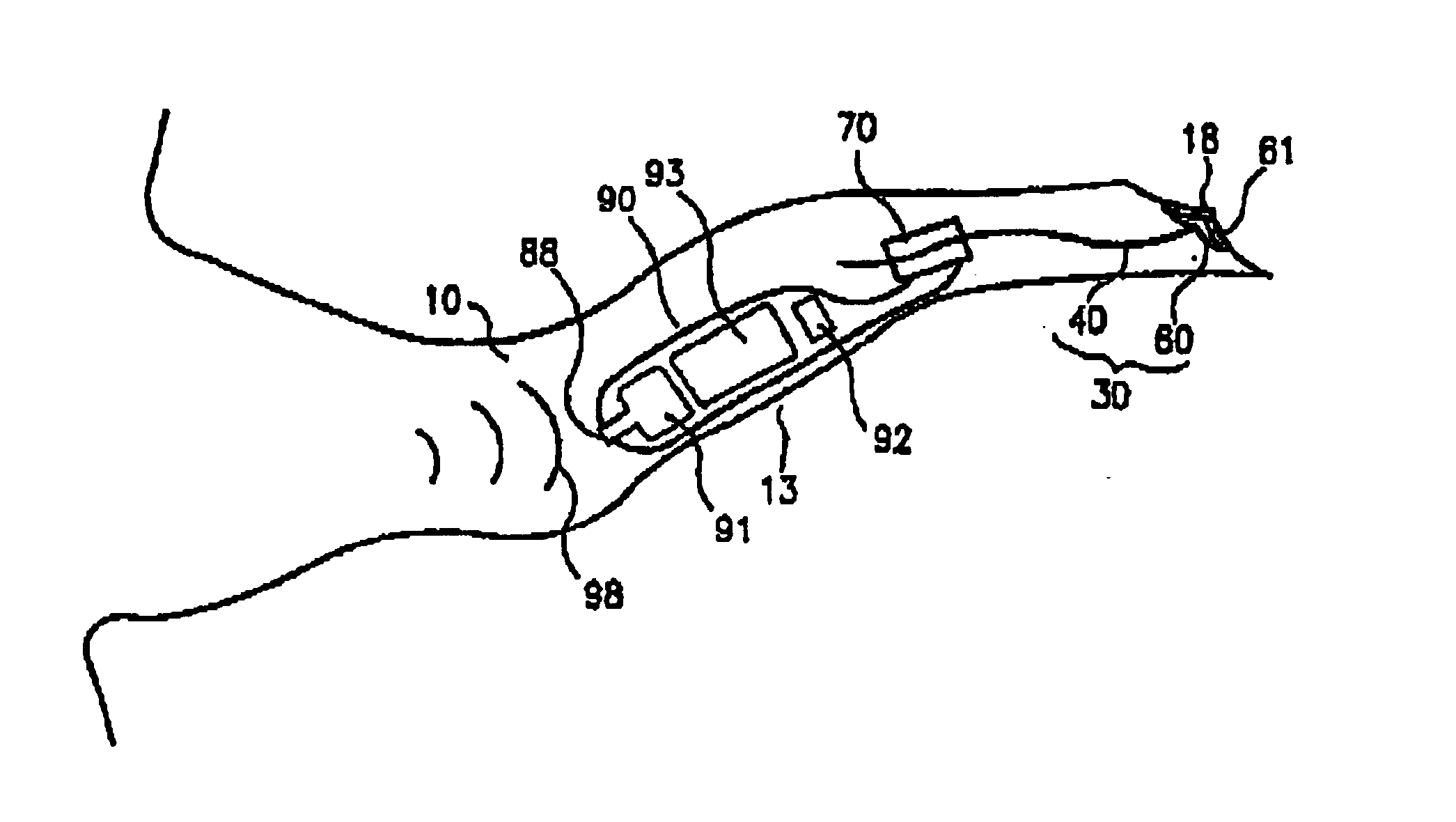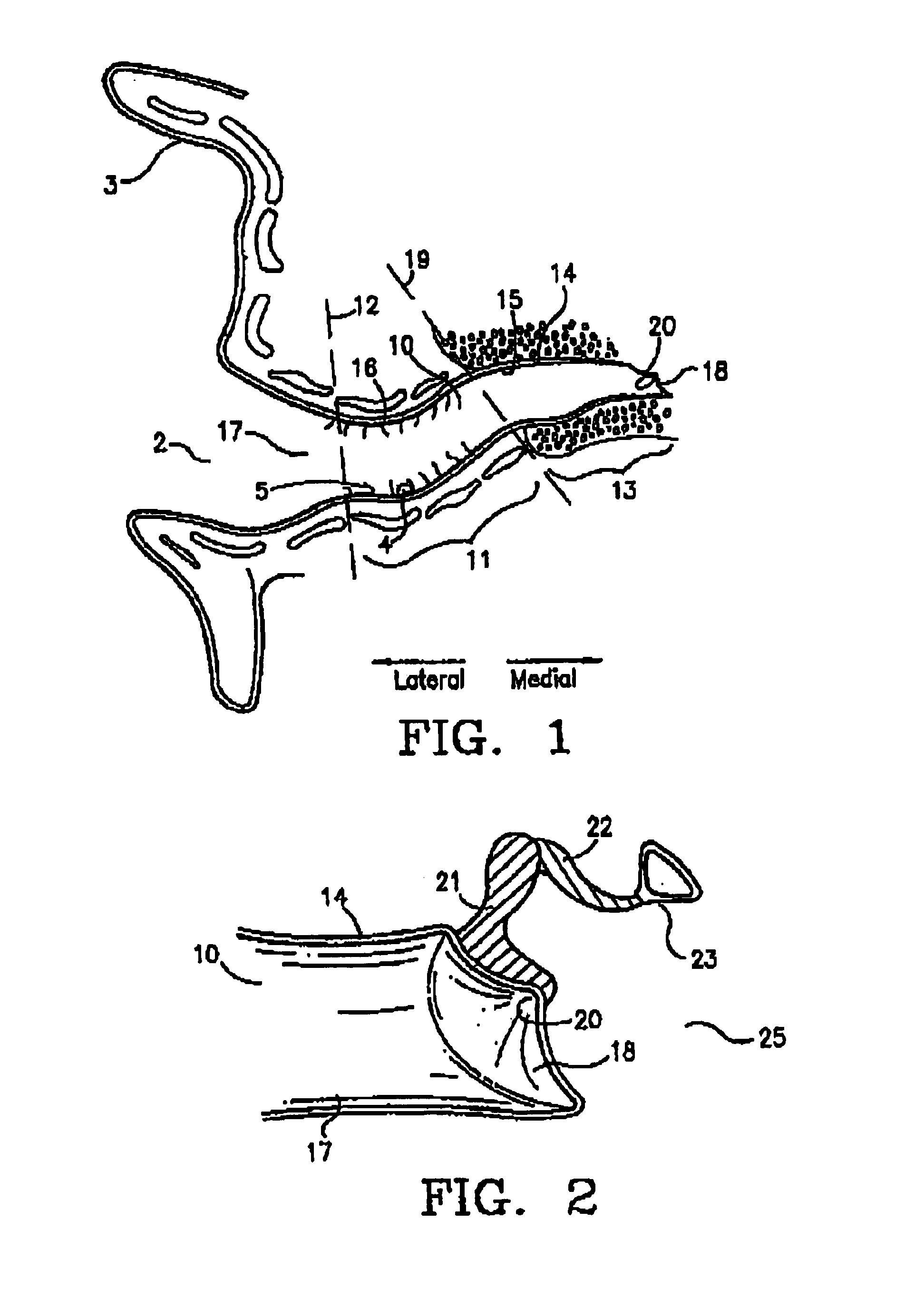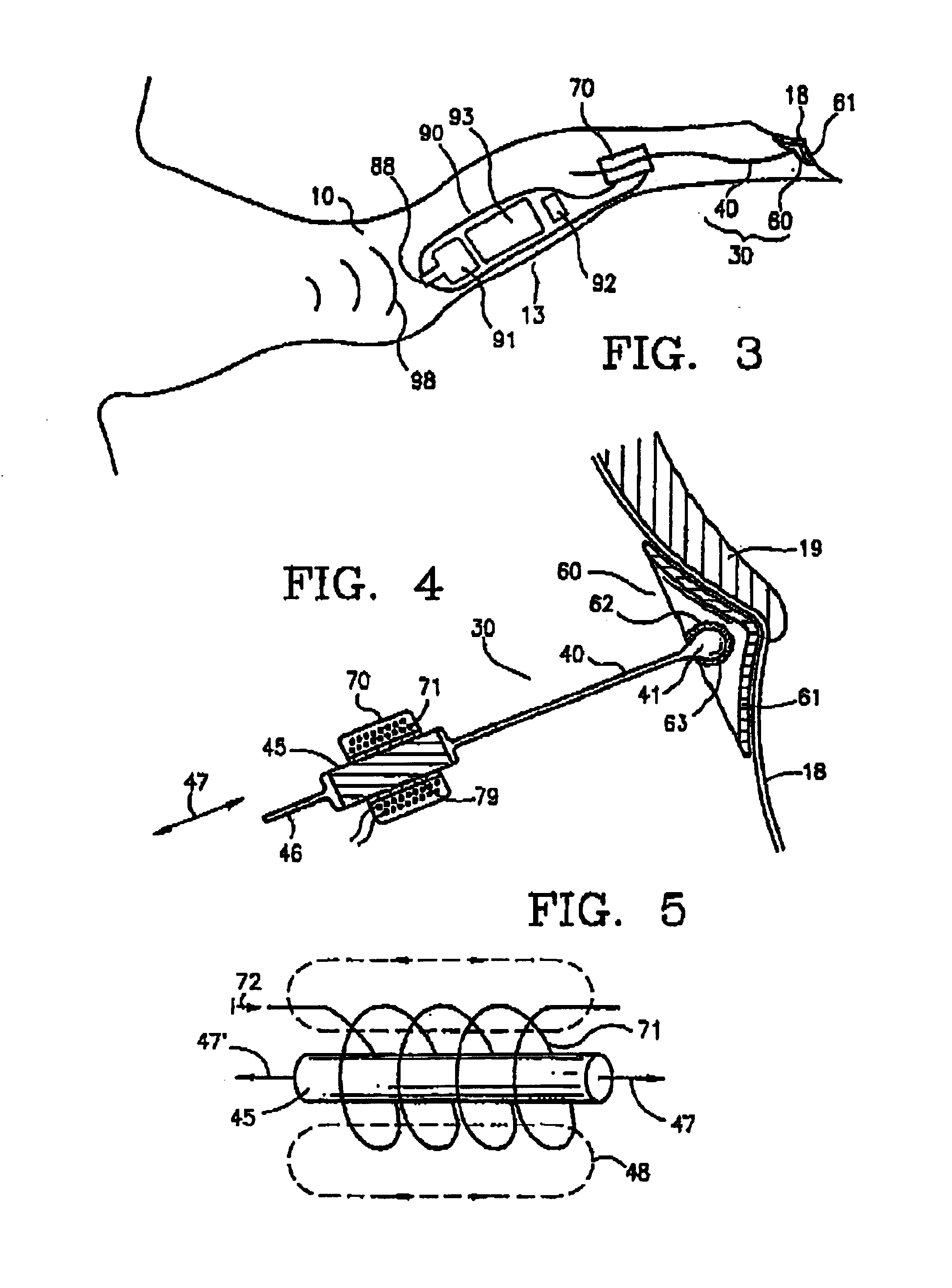Direct tympanic drive via a floating filament assembly
a floating filament and drive technology, applied in the field of transducers, can solve the problems of low sound fidelity, ear canal occlusion, acoustic feedback, etc., and achieve the effects of enhancing surface adhesion between the tympanic pad and the tympanic membrane, energy-efficient dynamic coupling, and minimal friction between the coil and the filamen
- Summary
- Abstract
- Description
- Claims
- Application Information
AI Technical Summary
Benefits of technology
Problems solved by technology
Method used
Image
Examples
Embodiment Construction
[0065]The present invention, illustrated in FIGS. 3-28, provides a vibrational filament assembly 30 to impart audible vibrations directly onto tympanic membrane 18 (e.g., FIG. 3). The filament assembly 30 consists of a thin elongate vibrational conductive member, referred to as filament shaft 40, and a tympanic coupling element, referred to as tympanic coupling pad 60, placed on the tympanic membrane 18 of a human subject (sometime referred to herein as the wearer of the hearing device, or simply, the wearer). The tympanic coupling pad 60 is weakly adhered to the tympanic membrane and is articulated with respect to the filament shaft 40 to allow for individual variations in the orientation of the tympanic membrane. The filament assembly 30 is dynamically coupled to a vibration force element 70 incorporated within a canal hearing device 90. The dynamic coupling allows the filament assembly 30 to move relatively freely axially with respect to the vibration force element 70 without adv...
PUM
| Property | Measurement | Unit |
|---|---|---|
| length | aaaaa | aaaaa |
| thickness | aaaaa | aaaaa |
| weights | aaaaa | aaaaa |
Abstract
Description
Claims
Application Information
 Login to View More
Login to View More - R&D
- Intellectual Property
- Life Sciences
- Materials
- Tech Scout
- Unparalleled Data Quality
- Higher Quality Content
- 60% Fewer Hallucinations
Browse by: Latest US Patents, China's latest patents, Technical Efficacy Thesaurus, Application Domain, Technology Topic, Popular Technical Reports.
© 2025 PatSnap. All rights reserved.Legal|Privacy policy|Modern Slavery Act Transparency Statement|Sitemap|About US| Contact US: help@patsnap.com



